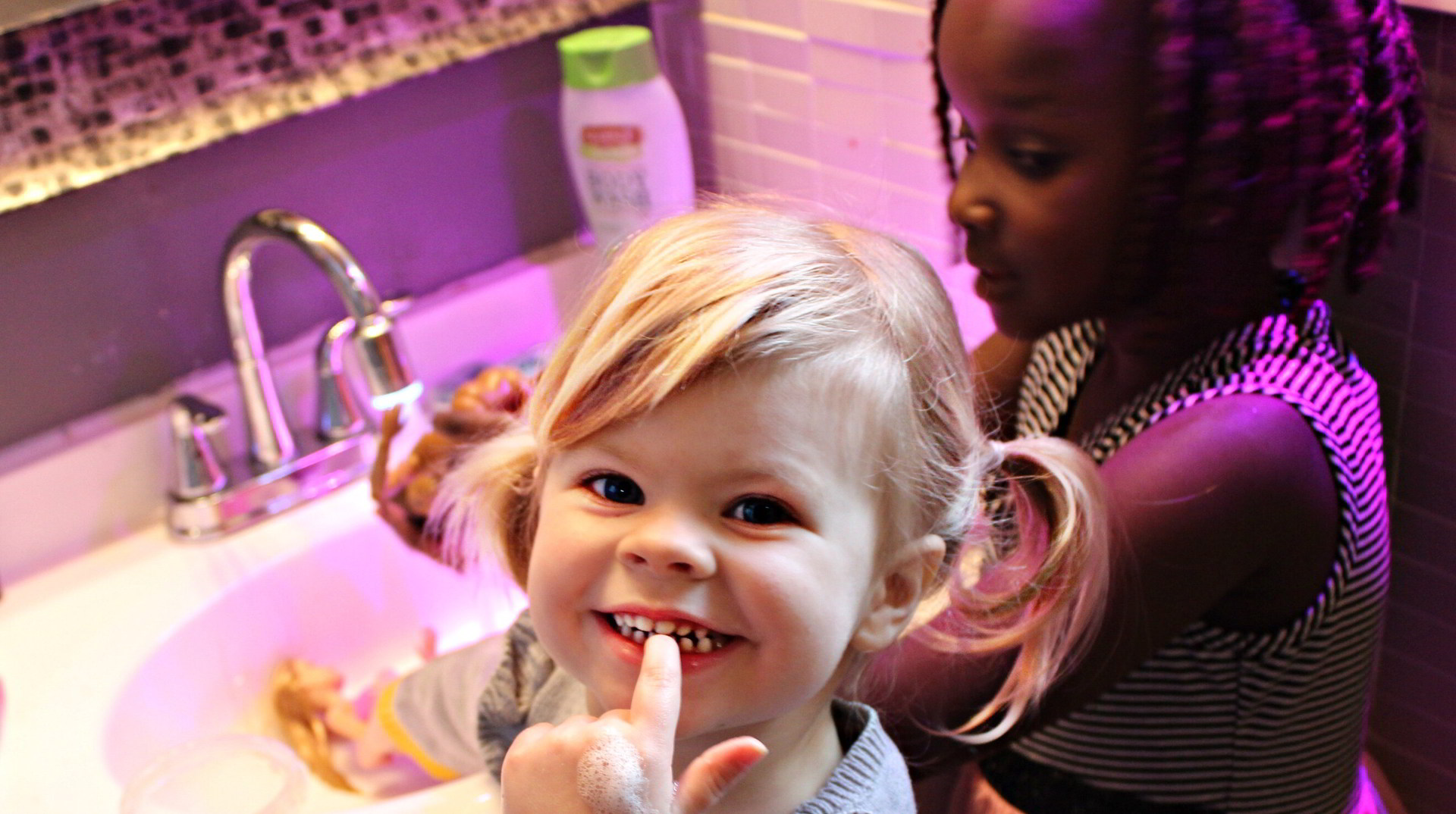When it comes to kids, getting them used to proper dental cleaning habits can be a challenge. However, if you start young and keep the process of brushing teeth fun, you will be building positive oral health patterns that will stick with them throughout their life.
When Do I Start Brushing My Child’s Teeth?
Once a child begins to develop teeth, getting them comfortable with toothbrushes is the next step. Children should have their teeth brushed two times a day. That includes once in the morning and once after dinner or before bed. Children two and under only need a relatively small amount of toothpaste on their brush.
Toddlers will likely get more curious about the process and want to experiment with brushing their teeth themselves. While they still may need some help to ensure they’re getting the entire tooth surface, you can make the experience more exciting by allowing them to pick their toothbrushes and toothpaste flavours. Once a child takes to brushing “by themselves”, they should be monitored while brushing their teeth until they are around eight years old.
Keep an eye on the appearance of a child’s toothbrush. Often, young children will chew on their brushes as they learn to brush properly. While most adults likely change their toothbrushes every three or so months, a toddler or young child may need a toothbrush update more often.
If your child is hesitant about brushing their teeth, try turning tooth brushing into an event by playing music, singing, and making the routine as interactive and fun as possible. Brush your teeth with your children as well. It will help them learn how to brush and allow them to mirror their oral care routine after your own.
When Should a Child Start Flossing?
Children typically do not have the dexterity to floss on their own until they are about ten years of age. However, it’s advisable that flossing should start when a child’s teeth begin to touch – which could be between the ages of two and six.
If you are having trouble reaching areas in your child’s mouth using traditional floss, try using floss picks. These can help get in between teeth in hard-to-reach areas and help make flossing overall much more manageable.
Visiting the Dentist for the First Time
By visiting the dentist young and keeping visits regular, children will see visiting the dentist as a normal part of life and will be less likely to suffer from anxiety. Before visiting the dentist, you can prepare your child by talking about the dentist or reading children’s books about dental visits to normalize the visit further. Talking openly to your children about the dentist and what to expect helps put them at ease before the visit and makes the entire experience less intimidating.
Are you ready to bring your child in for their first dental checkup? Contact us to book an appointment today!

